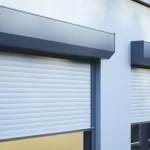What Are Smoke Curtains and How Do They Work

In the realm of contemporary architecture and building design, safety and innovation often go hand in hand. One crucial element that contributes to both aspects is the use of smoke curtains. As an integral part of fire safety systems, smoke curtains play a pivotal role in safeguarding occupants and minimizing property damage during emergencies. In this exploration, we delve into the world of smoke curtains, understanding what they are and unraveling the mechanisms that make them a vital component of modern building infrastructure.
What Are Smoke Curtains?
Smoke curtains are specially designed fire protection systems that act as barriers to control and restrict the movement of smoke within a building during a fire incident. Unlike traditional methods that solely focus on fire containment, smoke curtains address the equally dangerous byproduct of fires – smoke.
How Do Smoke Curtains Work?
1. Detection and Activation:
Modern smoke curtains are equipped with advanced detection systems that can sense the presence of smoke. Upon detection, the curtains are automatically activated to deploy.
2. Controlled Descent:
Smoke curtains are strategically installed in areas where smoke control is crucial, such as atriums, stairwells, or open spaces. When activated, they descend from their concealed positions to form a barrier that prevents smoke from spreading freely.
3. Barrier Formation:
The descending curtains create a barrier that hinders the lateral movement of smoke, channeling it towards designated exhaust points. This controlled movement aids in preventing smoke from engulfing large areas rapidly.
4. Temperature Resistance:
Smoke curtains are constructed from materials with high-temperature resistance, ensuring their effectiveness even in the intense heat generated during a fire. This resistance prevents the curtains from compromising their integrity when exposed to elevated temperatures.
5. Integration with Building Management Systems:
Many smoke curtains are designed to seamlessly integrate with building management systems. This integration allows for synchronized operation with other safety systems, such as fire alarms and sprinklers, ensuring a comprehensive approach to fire safety.
Advantages of Smoke Curtains:
1. Life Safety:
Smoke is a major contributor to casualties in fires. By containing and managing smoke, curtains contribute significantly to life safety by providing occupants with clearer evacuation paths and reducing the risk of smoke inhalation.
2. Property Protection:
Smoke damage can be as destructive as fire damage. Smoke curtains help minimize property damage by confining smoke to specific areas, reducing the overall impact on the structure and its contents.
3. Design Flexibility:
Smoke curtains are versatile and can be integrated into various architectural designs without compromising aesthetics. Their ability to remain hidden until needed makes them an attractive option for designers and architects.
In the pursuit of comprehensive fire safety, the integration of smoke curtains is a strategic and forward-thinking approach. Miacasa Group recognizes the pivotal role these devices play in enhancing life safety and protecting valuable assets. By understanding the principles behind smoke curtains and their seamless integration into building safety systems, we contribute to creating environments that prioritize the well-being of occupants and the preservation of property. For more information on innovative fire safety solutions, contact Miacasa Group today. Your safety is our priority.



